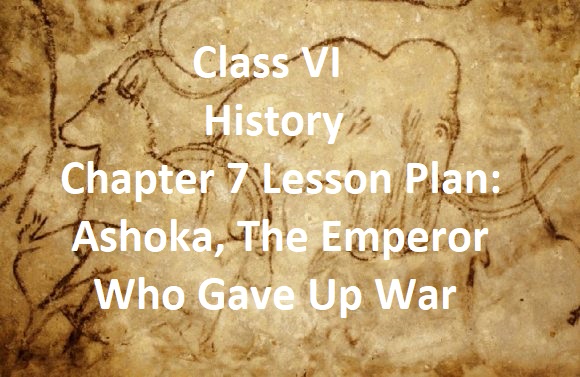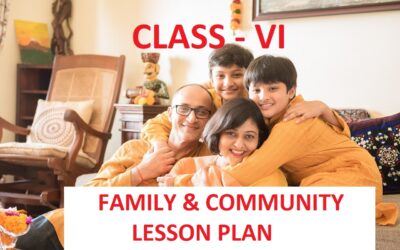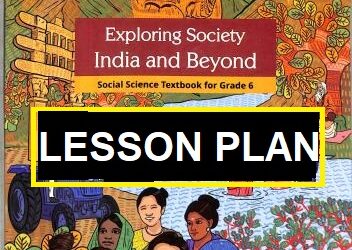Class VI History Chapter 7 Lesson Plan
History class VI Chapter 7 Lesson plan is an activity that a teacher has to perform before the actual teaching takes place. It is the road map for any teacher. Moreover, effective lesson planning provides the students with the necessary structure and direction. It also takes care of the diverse needs of our students. Class VI History Chapter 7 Lesson plan provides better resources that are integral to students. This lesson plan of class VI is full of classroom activities that children will enjoy doing. It will also allow teachers to critically reflect on and improve our teaching and learning practice. It ensures every minute of class time in teaching new concepts. Class VI History Chapter 7 lesson plan will help you to reach every child with a clear plan in mind.
Class VI History Chapter 7 Lesson Plan
General Objective:
Firstly, to develop students’ interest in the subject.
Secondly, to understand life in India 2300 years ago.
Thirdly, developing scientific temperament among the students.
Fourthly, to develop skills of inquiry, investigation, and analysis.
Finally, to enhance students’ learning ability.
Specific Objective:
- Students will know about the life of Ashoka.
- They will also learn about the Mauryan Empire.
- Finally, Students will also learn through case studies about the Kalinga war.
- The students will be able to analyze the importance of Non-violence.
Content/ Teaching Points: History Chapter 7 Lesson Plan
- A very big Kingdom – an empire
- How are empires different from kingdoms.
- Ruling the empire.
- The emperor and the capital city.
- Ashoka – a unique ruler
- Kalinga war
- what was Ashoka’s Dhamma
Checking Previous Knowledge:
At first, the teacher checks the previous knowledge of the students by asking a few questions like –
Have you heard about the Kalinga war?
Introducing Topic:
At first, the teacher introduces the topic by asking basic questions like:
Teacher: Into how many groups History has been divided?
Student’s response: Three
Teacher: Very Good. Can you name it?
Student’s answer: Ancient, Medieval, and Modern.
Teacher: Do you remember some of the ancient civilizations?
Student’s answer: yes teacher. Mesopotamian, Egyptian, and Harrapan.
Teacher: Wow. Have you heard about some famous dynasties in India?
Student’s answer: Yes teacher. Gupta dynasty, Pallava dynasty, and Mauryan dynasty.
Teacher: Do you know Ashoka belonged to which dynasty? (Problematic question)
Students: No response.
Introducing Topic:
O.K. So, today we are going to read about the king “Ashoka the great”.
Teaching aids:
Text Book, Black Board, PPT, etc.
Technique:
To begin with, the teacher starts the Interactive session with common examples.
However, the teacher uses various methods to make the topic interesting by interacting with the children in the class.
By asking very simple questions, the teacher draws the attention of the class.
Also, make sure that the children are involved in the discussion.
Finally, While interacting with the students, the teacher also tells the story of Ashoka and why he gave up war.
Class VI History Chapter 7 Lesson Plan
First Activity: Open Book Activity:
Topic: Ashoka, who gave up war
Time: 20 minutes.
Procedure: The teacher prepares 5-7 short questions.
Asks the students to discuss and find the answers from the textbook.
Questions:
Q1. What did you learn from this lesson?
Q2. Mention any two differences between a kingdom and an empire.
Q3. Do you think that people living in forests were more independent than the people living in towns?
Q4. Why did Ashoka give up war?
Q5. Why do you think Ashoka declared war against Kalinga?
Q6. How did Ashoka spread Buddhist ideals?
Q7. Chandragupta was always afraid that someone will kill him. Do you agree? Give reason.
Q8. Who was Ashoka’s father?
Class VI Civics Chapter 3 Lesson Plan: What is Government
Second Activity: Group discussion
Description:
Below are some activities which will be conducted in the classroom to enable interaction and critical thinking between students.
The teacher divides the class into four groups.
Each group is given a topic from the chapter, such as
- The rule of Dhamma is better than the rule of force.
- Empires are better than kingdoms.
- Ashoka was more powerful and popular before the Kalinga war.
- Buddhism is better than Jainism.
Group members have to read the topic from the book.
They have to discuss and provide information based on the given topic.
They will be given 20 minutes time to collect information and 3 minutes time to present.
Finally, their observations will be displayed on the class board for two days.
Class VI Geography Chapter 4 Lesson Plan Of Maps That Connects You With Your Students
Learning Objective: History Chapter 7 Lesson Plan
By the end of the activity, students will be able to:
- understand the difference between the rule of Dhamma and the rule of violence.
- differentiate easily between the empire and kingdom.
- provide detailed information about Ashoka.
- describe the teachings of Buddhism and Jainism
Assessment Criteria:
Indicators
- Relevance of Content
- Presentation of information gathered
- Awareness of the information gathered
- Creativeness
- Analytical Skills
Classwork:
- i) Firstly, Objective and short answer type questions will be done.
- ii) Finally, Long answer type questions will be discussed and done in the class.
Homework:
- Take an Indian rupee note. Make a list of things you see on it. Find out the meanings of symbols used in the currency note.
- Draw or paste a picture of a temple, church, Mosque, Gurudwara, and stupas. Find out how they are different from each other.
Values imparted:
Firstly, Social respect and responsibility.
Secondly, Sensitization towards the community.
Thirdly, kindness, honesty, empathy, self-discipline, open-mindedness, and the willingness to compromise.
Multidisciplinary Integrated learning:
- Art: Draw the Ashoka pillar.
- English/ Hindi: Write a paragraph about the transformation of Ashoka.
- Geography: Locate the extent of the Mauryan empire and mark Kalinga.
Assessment Criteria:
Indicators
- Relevance of Content
- Presentation of information gathered
- Awareness of the information gathered
- Creativeness
- Analytical Skills
Learning Outcome: History Chapter 7 Lesson Plan
After the completion of this chapter, students will be able to
- differentiate between the rule of Dhamma and the rule of violence.
- differentiate between the empire and kingdom.
- Narrate the life of Ashoka.
- describe the teachings of Buddhism and Jainism.
Remedial Measure:
Pair and share
Children sitting on the left side of the row will explain the chapter to the children sitting on their right.
Class VI History Chapter 7 Lesson Plan
Conclusion:
I hope You will find Class VI History Chapter 7 Lesson plan of great help. Here in this Class VI History Chapter 7 Lesson plan, we have included only single chapter from History. We have tried to keep our lesson plan teacher and student-friendly. I Hope, this Class VI History Chapter 7 Lesson plan caters to the need of every child. Students will love performing these activities which will make the class lively and interesting. As a teacher, if you have conducted any interesting classroom activity, do write to me so that I can include it in my Class VI History Chapter 7 Lesson plan.
If any teacher wants to write a guest post can mail it to me. Your article will be published in your name with your photograph on my website.
You may like to read other popular posts:
Class VI History Chapter 4 Lesson Plan: What Books and Burials Tell Us
Pl. write your views in the comment box given below. Do not forget to share it with your friends.





0 Comments